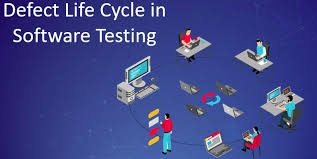Welcome to our blog section where we will be discussing some of the most common and important software testing interview questions. Since the role of a software tester requires a wide range of skills, knowledge, and experience, it is important to be prepared for the interview and know what to expect. Here are some of the key software testing interview questions that you may encounter:
1. What is software testing and why is it important?
This question is a common interview question that helps the interviewer understand the candidate's comprehension of software testing and why it is important. The candidate should be able to explain testing as the process of verifying whether a product meets its intended specifications and how it is essential to ensure quality, reliability, and a good user experience.
2. What are the different types of software testing?
The candidate should be able to explain the different types of software testing such as unit testing, integration testing, functional testing, usability testing, and performance testing. The candidate should also be able to explain when and how each type of testing is used.
3. What is white-box testing and black-box testing?
White-box testing and black-box testing are two major software testing techniques. A candidate must be able to describe both methods and explain how and when they're used.
4. What is regression testing?
Regression testing is one of the most important testing techniques. A candidate should be able to explain what it is and how it is used to ensure that new code changes do not break existing features.
5. What is a test plan?
A test plan is a comprehensive document that outlines the testing strategy for a particular project. The candidate should be able to explain what a test plan is and how they would create a test plan for a given project.
6. What is the importance of automation testing in software testing?
Automation testing has become an essential part of software development because it speeds up the testing process and reduces the likelihood of human error. The candidate should be able to explain how automation testing can help improve the efficiency and effectiveness of software testing.
These are some of the most common and important software testing interview questions that a candidate may encounter during an interview. Preparing for these questions will help you demonstrate your knowledge, skills, and experience in software testing and increase your chances of landing the job of your dreams.
Copy Rights Digi Sphere Hub





















